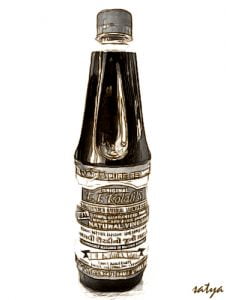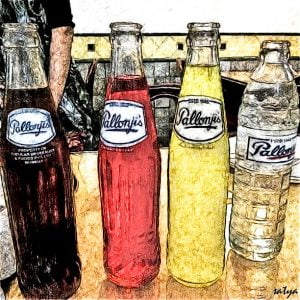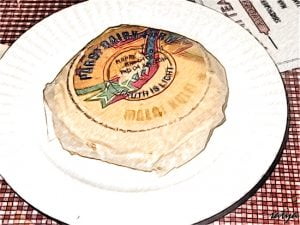Navroz or the Parsi New Year is celebrated on the first day of the first month of Farvardin in the Zoroastrian calendar.
Navroz is derived from the two Persian words “nav” (new) and “roz” (day).
The annual event falls during the Spring Equinox around March 21. In India, however, the Parsi community follows the Shahenshahi calendar and thus celebrate their new year later in July or August. In 2021, the Parsi New Year is being celebrated on August 16.
3000-Year-Old Tradition
A holiday on the Parsi New Year is a 3000-year-old Zoroastrian tradition. According to mythology, Prophet Zoroaster had first conceptualised Navroz.
It was celebrated by the followers of Zoroastrianism in Persia (now Iran), who migrated to places like Gujarat in India in the 7th century owing to Islamic invasions. Although the festival originated in Persia, it is celebrated with much fervour in many Indian states. The day is also referred to as “Jamshedi Navroz” after the Persian King Jamshed who founded the Parsi calendar.
On this day, Parsis clean their homes and decorate them with flowers and rangoli, making them beautiful and welcoming for visitors. Dressed up in traditional attire, they visit the Fire Temple after breakfast and perform a prayer called “Jashan” to express gratitude to God, pray for prosperity and seek His forgiveness. Milk, water, fruits, flowers and sandalwood are put into the sacred fire as offerings.
Let’s Party
After prayers, it’s time for hearty feasting at Parsi households with delectable dishes such as moong dal, pulav, fish, sali boti and sweet ravo. Guests are welcomed with a sprinkling of rose water and offered “faluda” to drink.

And while “dhansak”, “farcha” and “lagan nu custard” might be reason enough to say “jamva chalo ji” (let’s go for lunch/dinner), the whole meal is a symphony brought together by a clutch of iconic products.
Food Brands
The trinity of sweet, spicy and sour are the distinct flavours of Parsi cuisine. Creamy kulfi, sweet fizz soda (raspberry flavour) and a special iconic sugarcane vinegar have been the community’s food brands.
This vinegar has now gone beyond the Parsi household to win massive fan following across the country. We look into these brands which have stood their ground across time.

Kolah’s Vinegar: The Edaji Kolah brand came up in 1885. It’s non-synthetic vinegar. The vinegar balances the sweet, sour and Umami and it is the Parsi secret ingredient which go into the making of “patra ni machi”, to every masala mix and non-veg dish for Parsi cooking. There is a saying that a Parsi can go to that extra mile to get this vinegar. It originated at Navsari, Gujarat. Besides vinegar, the company also manufactures masalas, pickles and ice cream. An advance order of 48 hours is needed to pick Kolah Vinegar.
Parsi Dairy Farm: Nariman Ardeshir, a Parsi “doodh walla” (milkman) had a simple agenda. He wanted to provide fresh milk to his customers in Bombay now Mumbai. The milk was organic and he managed to efficiently deliver it at the doorstep. His tagline was “rich, pure and wholesome”.
Ardeshir then diversified into yogurt, paneer, Indian sweets and kulfi. The creamy richness of the kulfi sets it apart from competitors. The comes in several variants such as strawberry, sitaphal, mango along with silken paneer and full-fat cream. These are all unique products of Parsi Dairy Farm, which has now carved its presence beyond the Parsi community and going strong even after 105 years.
Pallonji’s and Duke’s: A Parsi feast is incomplete without a chilled, fizzy raspberry soda. This drink can be traced back to the 19th century when it was adopted from the Britishers. Thereafter, it became a permanent fixture in Parsi homes.

Those who were involved in these businesses were known as Sodawaterwalla or Sodabottlewalla (surnames).
The brand Pallonji soda started in Nagpur in 1865. It was very popular in then Bombay because it was patronised mostly by the Irani Cafes and Parsi community.
Duke soda was first bottled in Bombay aka Mumbai by Duke and Sons Pvt Ltd in 1889 and credit for it goes to Dinshawji Cooverji Pandole. Their popular products included Mangola, ice cream soda and lemonade. The company had its strong presence in western India, but later taken over by Pepsico in 1994. The brand still has its fizz and all Parsis are proud of each sip they take.
B. Merwan and Co: This Irani bakey chronicles the culinary history of the Parsi community which migrated from Iran to India. The Irani Chai (tea) and cake remains popular till date, wherever the community moved their bakeries followed with their bun maska, mawa cake andIrani Chai.

The oldest Irani bakery is B. Merwan and Co, which was set up in 1914. It’s popular for its mawa cake and khari biscuit. All the products in this bakery get sold out by the end of the day, assuring you of fresh products daily.


